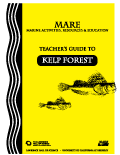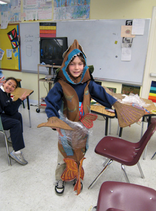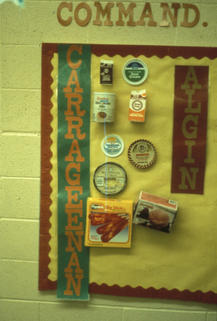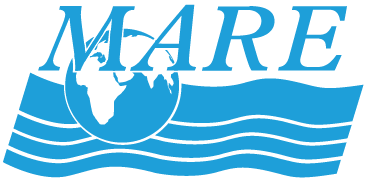4th Grade–Kelp Forest

Download the Kelp Forest Teacher Guide Now
Gazing from shore at the gently swaying surface of a kelp forest canopy, it’s difficult to imagine the activity below. But from holdfast to blade this algal forest is home to bizarre invertebrates and fish of every imaginable color, size, and form. It’s also the unique home of the endangered, yet recovering sea otter. Read a Teachers Background for the Kelp Forest (PDF, 81KB) to find out more about this habitat.
Curriculum Overview
Activity 1: Red Fish Roundup (3 Sessions)
Some fish hide from predators at depth by using camouflage color. The white light that comes from the sun is actually a mixture of the seven different colors seen in a rainbow. The ocean acts as a filter and allows only certain colors to pass through to the deep, while it absorbs other colors in the top few meters.
Students learn about light refraction through water, and experiment with color, light, and rainbows. They search for camouflaged fish during a “scuba diving” experience while wearing blue cellophane goggles to simulate underwater light conditions.
Activity 2: Fish Formation (3 Sessions)
A student is transformed into a fish to demonstrate the major adaptations of fish to life in water. Classmates contribute to the “dress-up” demonstration by suggesting adaptations to solve different aquatic needs (swimming, feeding, protection).

Activity 3: It Takes All Kinds (3 Sessions)
Adaptations are features and behaviors that can improve an organismt’s chance for survival. Students observe some common fish adaptations as a group, then using fresh fish from the market, students identify color and shape adaptations and use this information to predict fish habitat and lifestyle.
Activity 4: Sea Otter Jeopardy (3 Sessions)
Sea otters have many adaptations that help them to be successful in their kelp forest habitat. Cooperation, encouraging others, taking careful notes and using other available information posted around the room helps to insure that everyone is successful in learning new information.

Activity 5: Seaweed Smorgasbord (3 Sessions)
Seaweeds are plantlike organisms that have no roots, stems, leaves, flowers or adaptations necessary for living on land. Seaweeds have many adaptations to live in a watery environment including strong holdfasts, rubbery stipes, blades and spores. People around the world depend on seaweed for many important everyday uses.
Students taste and rate their preference for a variety of products containing seaweed or derivatives of seaweed and discuss cultural, modern, and traditional uses of these products.
Activity 6: Build a Kelp Forest (3 Sessions)
Students transform the classroom into a kelp forest habitat, and populate it with appropriate organisms.

